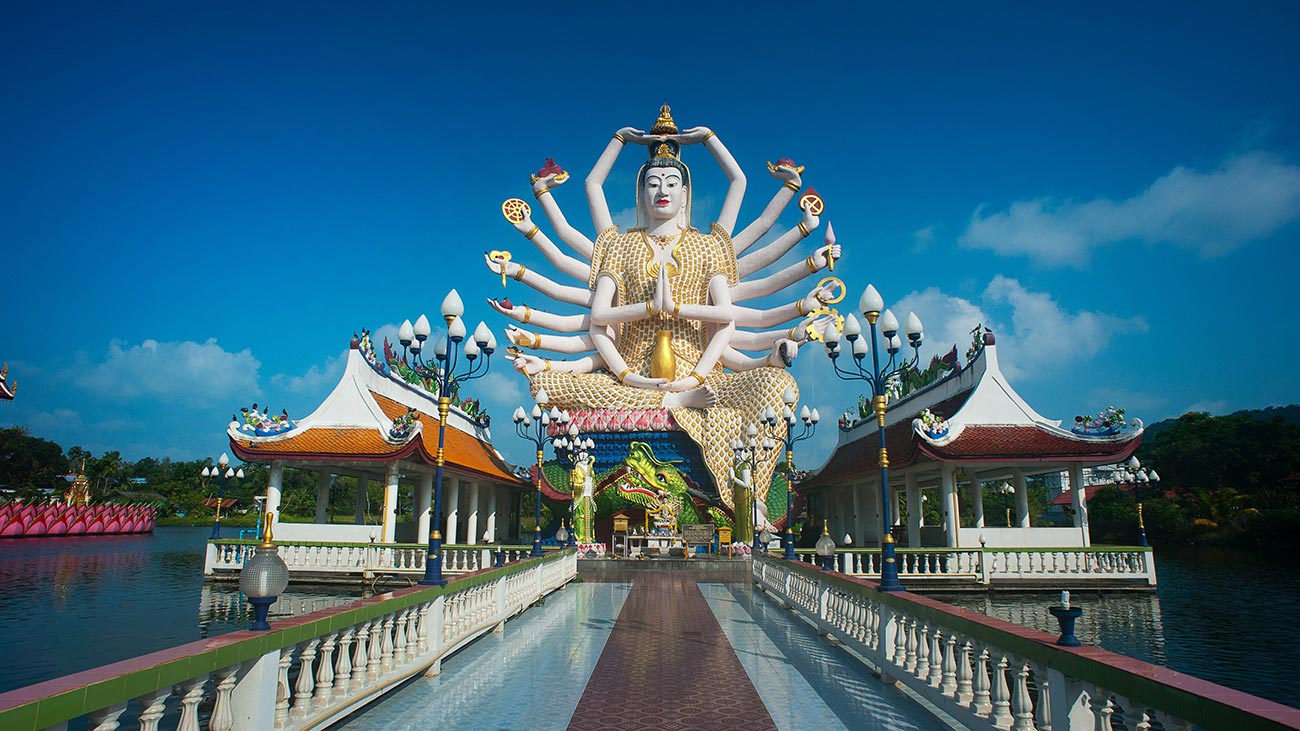Thailand is considered one of the world’s most prominent Buddhist nations. With more than 90% of the country’s population practicing Buddhism, religion plays an important role in the way of life of Thais.
Just like any other destination in Thailand, the popular tropical hotspot of Koh Samui is home to many Buddhist temples where devotees gather to honor Buddha. Everywhere you go, you are sure to catch a glimpse of a temple, a Buddha statue, or even a monk – evidence of how significant the religion is to the life of the locals.
For tourists, not only do these temples offer a glimpse into such marvelous design and architecture, they also impart a deeper understanding and appreciation of the cultural impact of these sacred places of worship.
Related article: The Fascinating Secret Buddha Garden in Koh Samui
How to Dress and Act When Visiting Temples
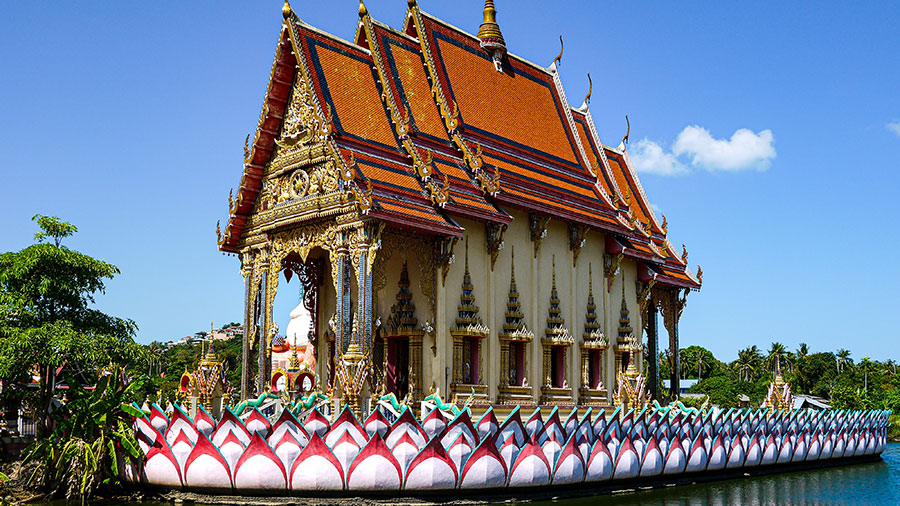
Temples are sacred, and visitors must comply with policies and rules for each temple to maintain order and sanctity of these holy grounds. Here are some essential matters to take note of before visiting a temple:
Dress Modestly
Like in any other church or hallowed dwelling, you must dress decently to avoid offending devotees and other visitors: Keep in mind the following rules before heading to a Buddhist temple:
- Do not wear short pants, mini skirts, revealing blouses, skimpy dresses, swimwear, and the like
- You must always cover your shoulders and knees. Sleeved shirts and bottoms that fall below the knee (capris, pants, long skirts) are ideal.
- It is recommended to bring a scarf to cover up when needed.
- You must take your shoes off before entering the temple, so closed-toe and slip-on shoes are ideal.
- You can wear socks since temple floors can get hot, especially during summer.
Act Appropriately
Always remember that you are in a sacred site and should always act appropriately. Here are some codes of conduct that you should take note of inside a Buddhist temple:
- Avoid talking loudly, laughing boisterously, and disrespecting the holiness of the temple by any means.
- Smoking and bringing alcohol are strictly prohibited.
- When inside the temple, ensure that your toes are not pointed toward Buddha’s image or statue. This act is a sign of insult or disrespect since the feet are considered the “dirtiest” part of the body in Thai culture.
- Ideally, you should sit on your knees or with both legs to one side with your feet pointing backward. Avoid sitting with your legs crossed with your toes pointed outwards.
- When leaving, ensure to back away while facing the Buddha image or statue before turning your back.
Notable Temples of Koh Samui
Now that you understand the significance of these temples and how you should dress and act while visiting them, let’s take a look at some of the temples that you should check out during your visit to Koh Samui:
1. Wat Phra Yai
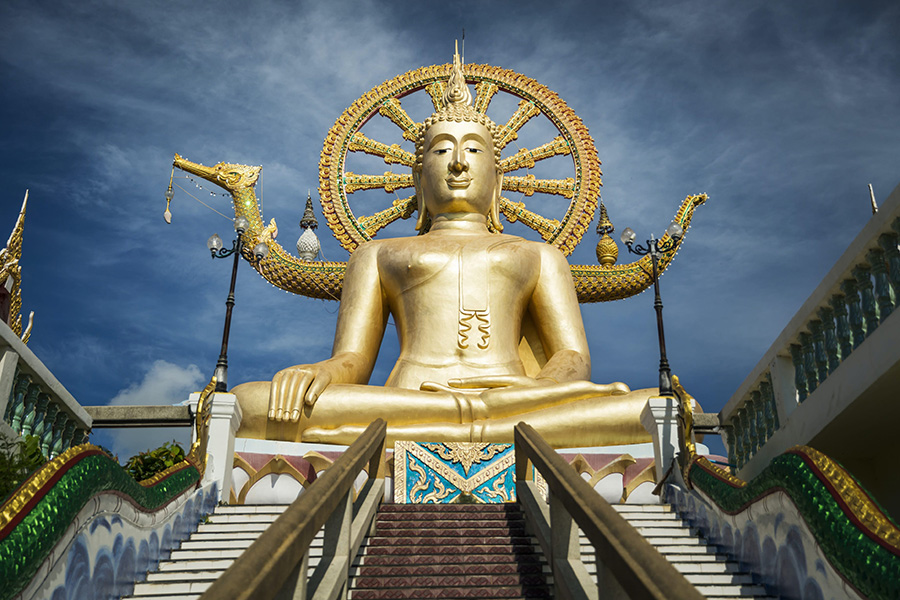
One of Koh Samui’s most famous temples is Wat Phra Yai, located on a rocky island called Koh Faan. The temple, which is also called the Big Buddha Temple, features a 12-meter-tall sitting golden Buddha statue built in 1972.
Wat Phra Yai attracts hundreds of tourists daily. Plenty of vendors sell food, drinks, amulets, religious artifacts, and souvenirs around the statue’s base.
2. Wat Plai Laem
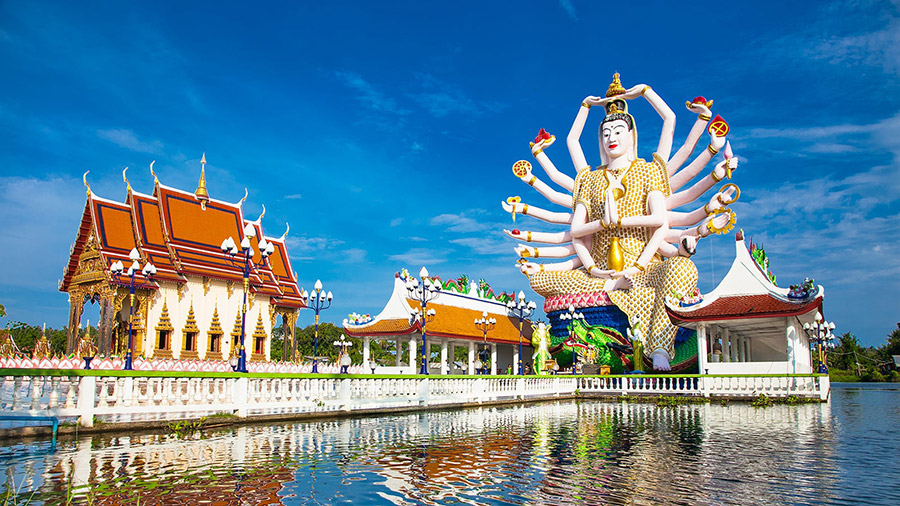
Wat Plai Laem previews an imposing 18-armed image of Guanyin, the Goddess of Mercy and Compassion. The religious complex is known for its intricately designed architecture that combines Thai and Chinese elements. It is also surrounded by a lake, which adds to the tranquil and calm ambiance of the site.
3. Wat Ratchathammaram
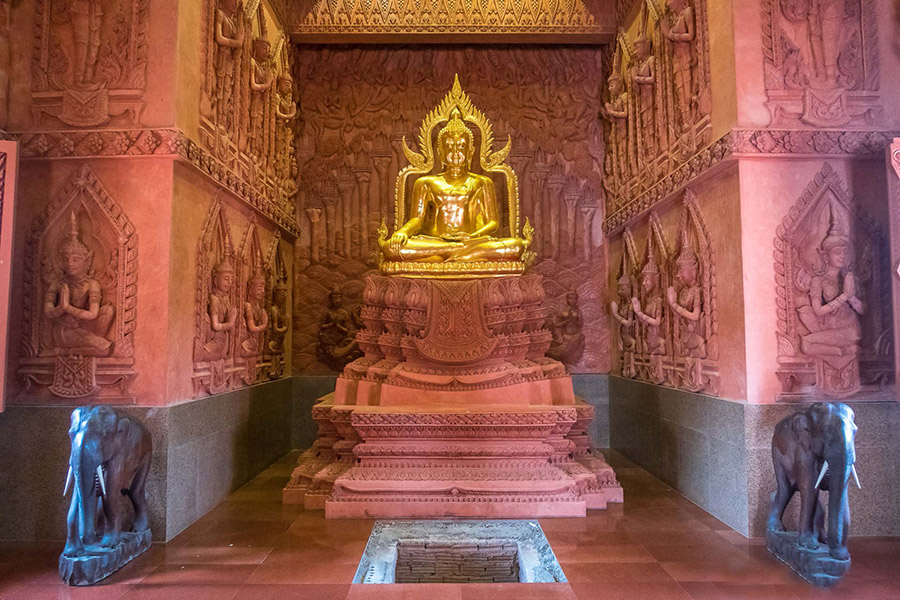
Also known as The Red Temple, Wat Ratchathammaram is known for its deep-red brick structures. The temple is filled with ornate stone carvings and sculptures, most depicting various scenes from Buddha’s life.
The temple is found along Samui Ring Road, between Lamai and Hua Thanon, in the southern part of Koh Samui. It is also referred to as Wat Sila Ngu or “Stone Snake Temple” because of the intricate stone-carved image of snakes around the area.
4. Wat Khunaram
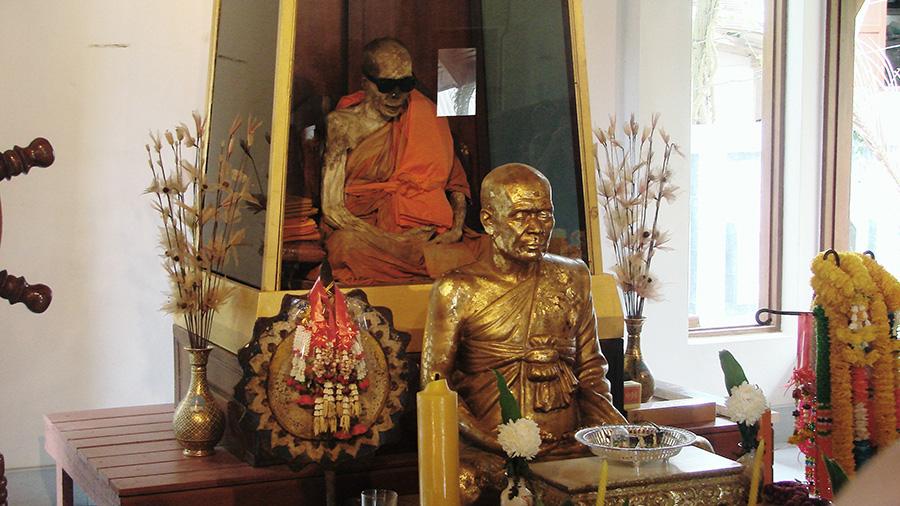
Wat Khunaram is famous for being the home of Luong Pordaeng, a monk who died while meditating in 1973 and whose remains are mysteriously preserved in a mummified state. The mummified monk’s remains are displayed at the heart of the temple and have shown little to no signs of decay over the years.
While the temple is simple and modest, visitors and devotees drop by to catch a glimpse of the unusual and fantastical spectacle. More than just being a unique attraction, the mummified monk is also a source of reverence and reflection among believers and devotees.
5. Khao Hua Jook Chedi
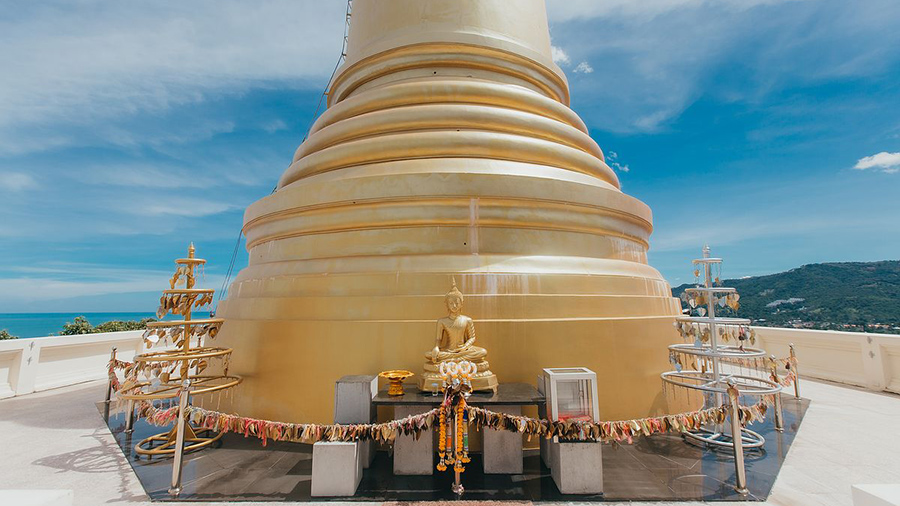
Khao Hua Jook Chedi is a temple on an elevated terrain overlooking Chaweng Lake. Getting to this golden pagoda requires a bit of hiking since it sits on top of a hill. Still, the stunning view of Koh Samui’s coastlines and surrounding mountains will make the trip worth it.
Aside from the beautiful vista, Khao Hua Jook Chedi also features a variety of Buddha sculptures, golden idols, and images. Since it is located near the Samui International Airport, you can also expect to spot several planes flying by.
………………………………
Featured Image: Oleksandr Pidvalnyi


